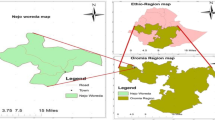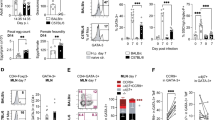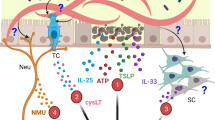Abstract
EARLIER, studies with sheep infested with Haemonchus contortus or with Trichostrongylus colubriformis1–3 showed that the ‘self-cure’ phenomenon was caused by the intake of infective larvæ by sheep rendered hypersensitive as a result of previous infestations. The hypersensitive reaction was evidenced by a transient rise in blood-histamine within four days, by the development of skin-sensitivity to an antigen prepared from larvæ and by the development of œdema in the portion of the alimentary tract infested.
This is a preview of subscription content, access via your institution
Access options
Subscribe to this journal
Receive 51 print issues and online access
$199.00 per year
only $3.90 per issue
Buy this article
- Purchase on SpringerLink
- Instant access to full article PDF
Prices may be subject to local taxes which are calculated during checkout
Similar content being viewed by others
References
Stewart, D. F., Aust. J. Agric. Res., 1, 301 (1950).
Stewart, D. F., Aust. J. Agric. Res., 1, 427 (1950).
Stewart, D. F., Aust. J. Agric. Res., 4, 100 (1953).
Author information
Authors and Affiliations
Rights and permissions
About this article
Cite this article
STEWART, D. ‘Self-Cure’ in Nematode Infestations of Sheep. Nature 176, 1273–1274 (1955). https://doi.org/10.1038/1761273b0
Issue date:
DOI: https://doi.org/10.1038/1761273b0
This article is cited by
-
Systemic responses to challenge infection withHaemonchus contortus in immune Merino sheep
Veterinary Research Communications (1993)
-
Heterologous antagonistic and synergistic interactions between helminths and between helminths and protozoans in concurrent experimental infection of mammalian hosts
Parasitology Research (1987)



